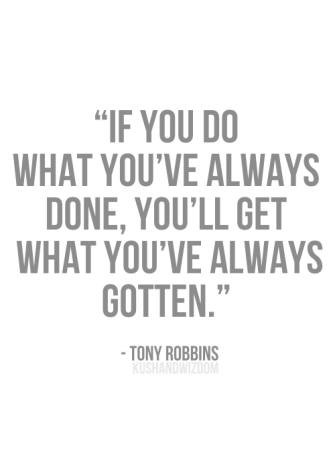Staying with the same company for life is something that doesn’t happen too much these days. In fact, millennials seem to be known for job hopping. While being too “hoppy” can definitely work against you, there is something to say for not staying in a bad situation longer than absolutely necessary. The best part of a not-so-great job is that you can at least learn what you don’t want.
However, making a string of mistakes and creating a resume full of short stints won’t work in your favor so when you decide it’s time to move on, be sure to learn from the past.
There is a really simple and quick exercise that I strongly recommend doing before moving jobs. It’s called start, stop, continue and while it’s often used to gather feedback and for team building purposes, I think it works really nicely in this situation as well.
START WITH A BASIC 3-COLUMN CHART LIKE THE BELOW

JOT DOWN NOTES IN THE 3 CATEGORIES
Start – In this column, jot down the things that you haven’t gotten to do in your current (or last) job but would really like to start doing. These could be things that you saw others in the company do (your boss, peers, those on other teams), things friends are doing that sound interesting, or just things you know you’d enjoy and be good at.
In an ideal world, what kind of great stuff would you want to do each day? List it here.
Stop – Well, this one will be easy! What are you tasked with doing in your current job that you absolutely can’t stand? As much as I’ve loved all of the jobs I’ve held, I could rattle these off in 5 seconds flat. There will always be things in a job that you won’t love, but the stop column should be reserved for those tasks that you really can’t stand.
Continue – Lastly, what are the things you’re doing already that you’d like to continue. Even in jobs you dislike overall, there are usually a few redeeming qualities or moments in the day. Identifying those can be really powerful. You’ve had experience doing these things (so it’s not something you’re romanticizing in your mind) and you know they can exist in a job.
The “continue” column is also important because the more things you’re willing to continue doing, the easier it will to build on the experience you’ve already had and leverage that to get a better title, salary, or set of responsibilities in the next job.
DON’T IGNORE YOUR LIST
Sometimes people are so desperate to get out of their current situation, that they’ll gladly walk into an equally bad one. It’s important to make this list with a clear mind and then actually take it to consideration when you receive job offers.
Of course there is no perfect job out there and I don’t know a single person who enjoys every minute of every workday, but this list will serve as a really good filter. When looking for new roles and evaluating offers, go back to what you’ve written and make sure you’re using what you’ve learned about past experiences to make strong future decisions.

image via http://thegoodvibe.co/
Hope this will help you as you think about your next career move!





